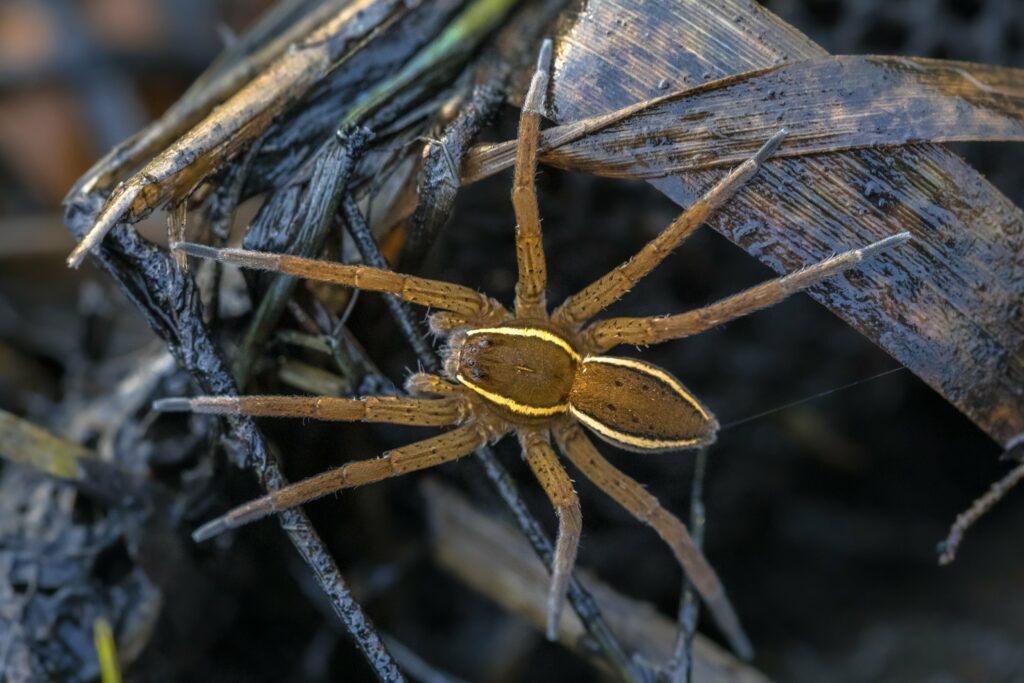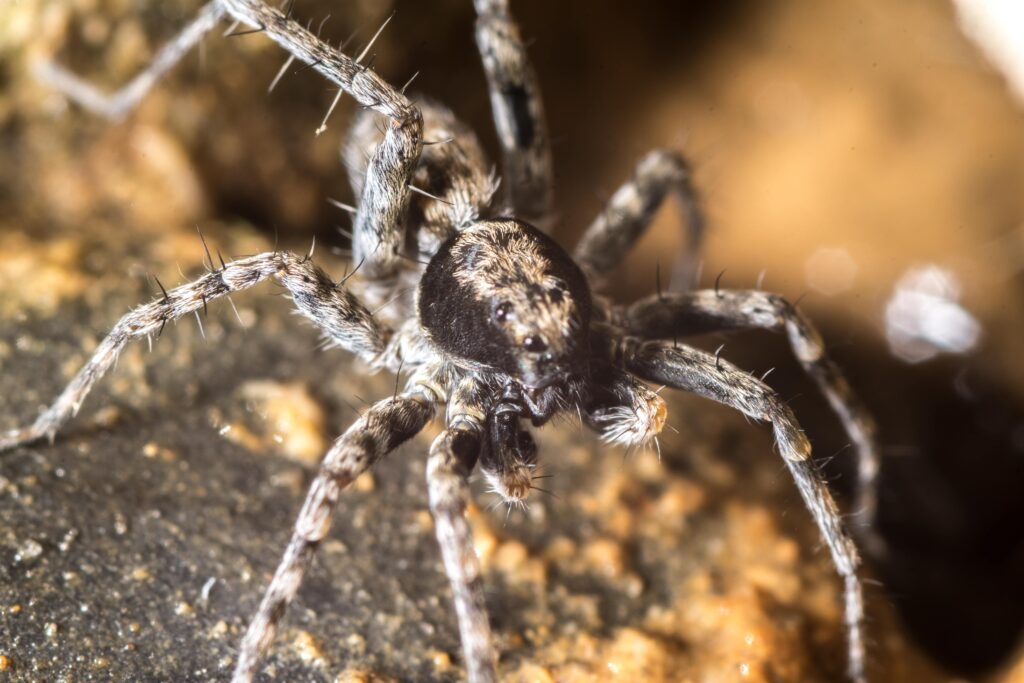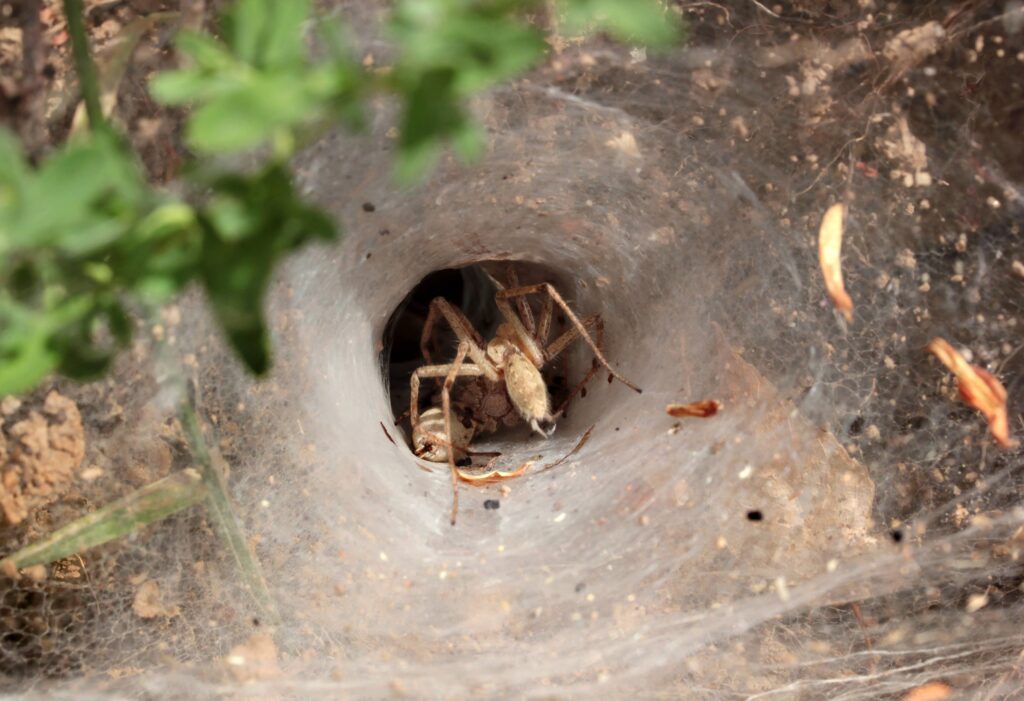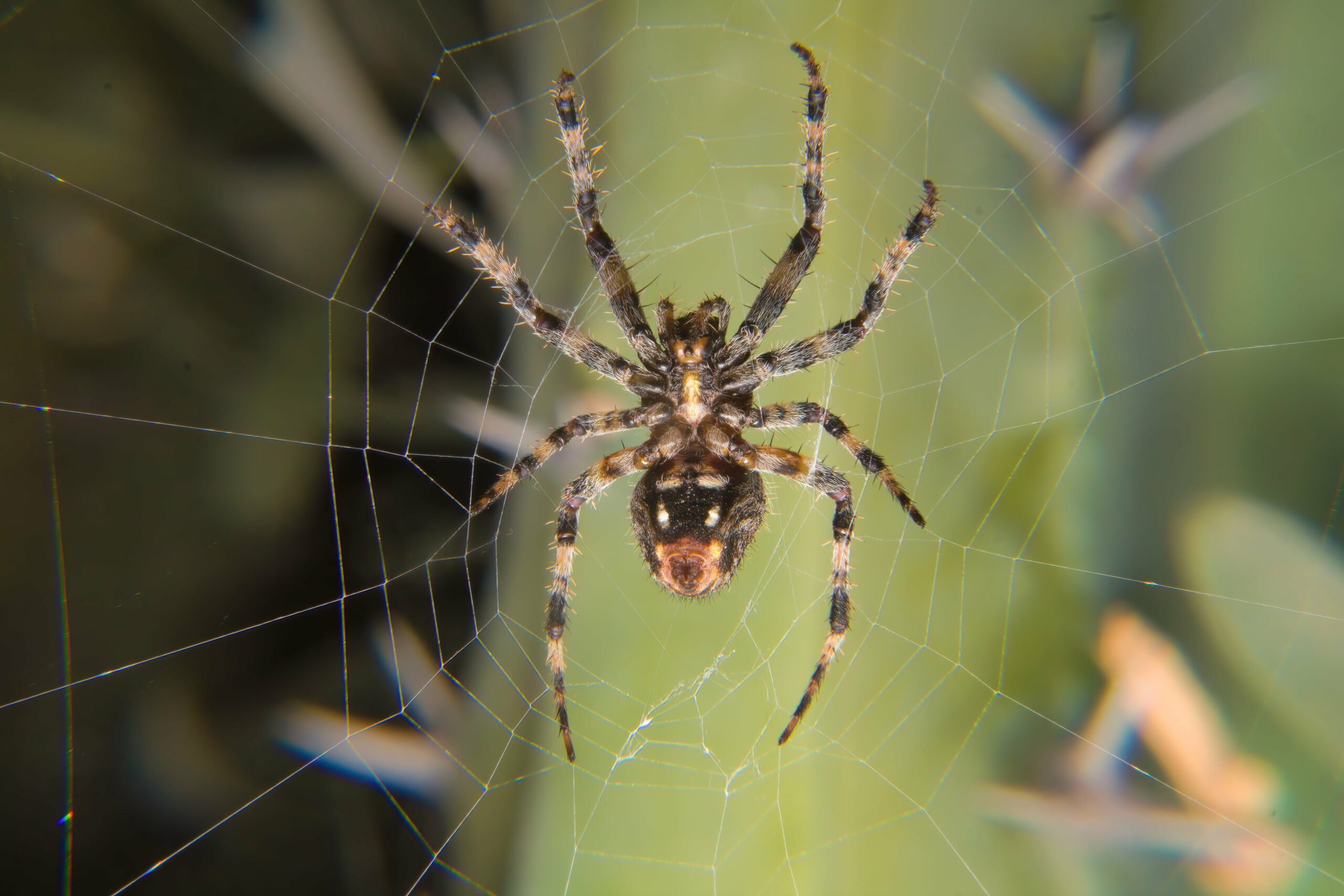Dock spiders, also known as wharf and baby dock spiders hatch out, are fascinating arachnids that often evoke a mix of curiosity and apprehension among people. With their black and brown markings and impressive size, these eight-legged creatures can be quite intimidating at first glance.
However, it is essential to separate fact from fiction when it comes to dock spiders’ reputation. In this article, we will explore the truth about dock spiders—whether they are truly poisonous or not—and dispel some common misconceptions surrounding these intriguing creatures.
Definition of Dock Spiders

Dock spiders belong to the family Dolomedes and are primarily found in North America and Europe. In North America, one of the most well-known species is Dolomedes triton, which is often referred to as the North American dock spider. These arachnids can reach sizes that surpass even the palm of an adult’s hand, making them one of Canada’s largest spiders.
Common Misconceptions about Dock Spiders
Misconceptions surrounding dock spiders abound due to their formidable appearance and reputation. One prevalent misunderstanding is that all large spiders are venomous by nature. However, this generalization does not hold true for all species.
While some large spiders indeed possess venom for hunting purposes or self-defense, it does not automatically mean they pose a threat to humans. Another misconception arises from misidentifying dock spiders as dangerous due to similarities with other venomous arachnids like black widows or brown recluses.
It is crucial to recognize that dock spiders have different species-specific characteristics and behaviors compared to these more notorious venomous counterparts. Understanding the reality behind these misconceptions will help foster coexistence with these creatures while appreciating their ecological importance in maintaining balance within our ecosystems
Dock Spiders: Venomous or Not?
Overview of Venomous Spiders
Venomous spiders have long been a subject of fascination and fear. These eight-legged creatures possess venom, a specialized secretion stored in their venom glands, which they use for hunting and self-defense.
The purpose of venom is to immobilize prey or deter potential threats through its toxic properties. While most spiders are harmless to humans, there are several venomous species that can cause varying degrees of harm.
The Truth about Dock Spiders’ Venom
When it comes to dock spiders, also known as fishing spiders or raft spiders, there is a common misconception about their levels of venomosity. However, the truth is that dock spiders are often not considered highly venomous to humans. While they do possess venom glands and can deliver bites if provoked or threatened, their venom is primarily intended for subduing their natural prey such as insects and small aquatic creatures.
Identification of Dock Spider Species

Dock spiders encompass various species of wolf spiders within the Dolomedes genus. In North America, the most commonly encountered dock spider species is Dolomedes triton.
These impressive arachnids feature robust bodies with hairy legs spanning up to several inches in length. They often have distinct black and brown markings on their abdomens which aid in identification.
Dock Spider Venom Composition and Effects
The composition of dock spider venom varies among different species but generally consists of a mix of proteins and enzymes. As mentioned before, their primary function is catching prey rather than causing harm to humans. In fact, dock spider bites on humans are rare occurrences and typically result in minor symptoms such as localized pain, redness, and swelling that subside within a few days without medical intervention.
So while dock spiders possess venom like many other spider species, it’s important to understand that their venom poses minimal risk to humans. Their bites are generally harmless and do not require medical attention unless an individual experiences severe allergic reactions or other unusual symptoms.
In the grand scheme of things, dock spiders play a valuable role in maintaining ecological balance by controlling populations of common household pests. So, instead of trying to eliminate dock spiders from your surroundings, it’s best to appreciate them as fascinating and beneficial creatures
Dock Spider Species and Their Habits

Different types of dock spiders worldwide
Dock spiders, scientifically known as Dolomedes, are a diverse group of spiders found across the globe. While they share some common characteristics, each species of female dock spider has its own unique set of habits and adaptations. Two prominent types of dock spiders are the North American dock spider (Dolomedes triton) and the European water spider (Arctosa cinerea).
North American dock spider (Dolomedes triton)
The North American dock spider, also known as the wharf spider, the fishing spider, or nursery web spider, is one of Canada’s largest spiders. They can reach an impressive size, with females often spanning up to 10 centimeters in leg span. These arachnids have a robust build with light brown markings on their body.
These formidable creatures prefer moist environments and are commonly found near bodies of water such as lakes, ponds, or slow-moving streams. Their habitat includes areas with abundant vegetation where they can construct their webs or retreat into hiding places during daylight hours.
European water spider (Arctosa cinerea)
The European water spider differs from its North American counterpart in that it exhibits distinct adaptations to aquatic environments. Also known as the diving bell spider or water dock spider, this species has evolved to live exclusively in wet habitats such as marshes, ponds, and slow-flowing rivers.
Unlike other spiders that use silk threads for hunting or creating webs on land, the European water spider spins a unique web underwater called a “diving bell.” These structures consist of spun silk anchored to submerged vegetation and filled with air bubbles trapped by the mother spider. This ingenious adaptation by the female spider provides both oxygen supply and buoyancy within their dwelling as they catch prey like small fish and other aquatic insects.
Dock spiders encompass various species with fascinating adaptations and habits. The North American dock spider thrives in moist environments near bodies of water, using its size and hunting prowess to catch prey.
On the other hand, the European water spider has evolved specialized skills to survive underwater by constructing diving bell webs. Understanding these unique characteristics allows us to appreciate these remarkable arachnids and their vital role in maintaining ecological balance in our surroundings.
Dock Spiders’ Ecological Role
Predatory Nature: Masters of the Dock
Dock spiders, also known as fishing spiders, are remarkable predators that play a crucial role in balancing local ecosystems. These arachnids have earned their reputation as skilled hunters, employing a range of strategies to secure their meals. With their large size and exceptional agility, dock spiders are perfectly adapted for life near water bodies, making them formidable predators both on land and in aquatic environments.
Diet Preferences and Hunting Techniques

Dock spiders have a diverse palate when it comes to food selection. They primarily feed on insects found in and around the water, such as aquatic insects like dragonflies and mayflies. These eight-legged marvels rely on their sharp vision to spot potential prey from far away.
Once they locate an unsuspecting victim, they use their elongated front legs to snatch it with lightning speed. When hunting aquatic insects on land or along the shoreline plants trimmed by humans, dock spiders employ stealthy tactics.
They rely on their excellent camouflage skills to blend seamlessly into the surroundings while patiently waiting for insects to come within striking distance. Once within range, they pounce upon their prey with surgical precision.
Impact on Local Insect Populations
The presence of dock spiders in an ecosystem has significant implications for local insect populations. Acting as natural pest managers, these arachnids help control populations of potentially harmful bugs like mosquitoes and flies. By preying upon these pests in abundance, dock spiders limit their numbers and reduce the risk of diseases they may carry.
Furthermore, dock spider activity contributes to maintaining overall ecological balance by preventing insect outbreaks that could threaten crops or disrupt delicate ecosystems. These remarkable creatures serve as nature’s own form of professional pest control service.
Interactions with Humans: Fascinating Encounters
Common Encounters with Dock Spiders
In regions like cottage country, encounters with dock spiders are frequent and often serve as memorable experiences. It is not uncommon to stumble upon these remarkable creatures when enjoying a leisurely stroll along the shoreline or while fishing on a calm summer day. Due to their size, dock spiders can be quite striking and capture the attention of those lucky enough to cross paths with them.
Reaction to Human Presence and Defensive Behaviors
When confronted by humans, dock spiders typically respond in predictable ways. Their reaction depends on various factors, including the individual spider’s temperament and the level of disturbance they perceive.
Most encounters involve dock spiders adopting a cautious stance rather than displaying aggression. These spiders are generally more interested in avoiding confrontations rather than initiating them.
They may freeze in place or slowly retreat if they feel threatened. If provoked or cornered, some dock spiders may exhibit defensive behaviors such as raising their front legs in an intimidating manner or even biting as a last resort.
However, it is important to note that dock spider bites are extremely rare and typically much milder than a bee sting level bite. Overall, understanding these fascinating creatures’ behavior can help foster coexistence and appreciation for their ecological significance while ensuring personal safety during close encounters.
If deemed necessary to remove dock spiders from your living space, it is advisable to contact a professional pest control service familiar with handling arachnids instead of attempting removal yourself. Dock spiders truly embody nature’s marvels through their predatory prowess and intricate interactions with both insect prey and humans fortunate enough to witness their presence along our beloved shorelines.
Safety Precautions Around Dock Spiders

Understanding the Risks Involved
Dock spiders may appear intimidating, but understanding the risks involved can help put your mind at ease. While most spiders are harmless to humans, some individuals may have allergic reactions to dock spiders’ bite.
If you have a history of severe reactions to insect bites or stings, it is important to take extra precautions when dealing with dock spiders. Keep in mind that allergic reactions to female dock spiders are rare and typically manifest as localized swelling, redness, and itching around the bite area.
However, if you experience difficulty breathing or any other severe symptoms after a dock spider bite, seek immediate medical attention. For sensitive individuals who wish to minimize direct contact with dock spiders, handling precautions can be taken.
It’s advisable to wear gloves when conducting activities on water, where encounters with dock spiders are likely. By doing so, you can protect yourself from potential bites and also reduce the risk of skin irritation caused by coming into contact with their bristly legs.
Tips for Coexisting Peacefully with Dock Spiders
Coexisting peacefully with dock spiders is a viable option for those who appreciate their ecological role while wanting to maintain a safe environment for themselves and their loved ones. Non-lethal removal methods can effectively address any concerns without causing harm. If you come across a dock spider indoors or in an area where its presence might be undesirable, gently place a container over it and carefully slide a piece of stiff paper underneath it before releasing it outdoors away from human activities.
This way, the spider is relocated without causing harm or unnecessary stress. Creating suitable habitats away from human activities is another strategy that promotes peaceful coexistence.
Dock spiders thrive near bodies of water since they require aquatic environments for hunting and reproduction purposes; therefore, maintaining proper landscaping practices that provide them access to suitable habitats while keeping them away from high human traffic areas is essential. By reducing clutter and implementing natural deterrents, such as gravel or plants that deter dock spiders from living on, you can discourage dock spider infestations in areas close to your home.
Remember, if you find yourself dealing with a persistent dock spider issue that poses a threat to your peace of mind or safety, it is always wise to seek assistance from a professional pest control service with expertise in managing spider populations. Coexisting peacefully with dock spiders not only allows for a harmonious relationship between humans and these remarkable arachnids but also contributes to the preservation of their vital ecological role.
Conclusion
The Enigmatic Dock Spiders: Guardians of Waterfronts and Nature’s Allies
Dock spiders, also known as a wharf, dock spiders, canada’s, or fishing spiders, are fascinating creatures that often remain misunderstood. We have debunked the misconception of their venomous nature, discovering that they pose minimal risk to humans. Instead, these eight-legged marvels play a vital ecological role in maintaining balance in our ecosystems.
Dock spiders exhibit remarkable adaptability and resourcefulness. Male dock spiders construct intricate webs to protect their young from harm while females roam the shores in search of prey.
These skilled hunters primarily target aquatic insects and even small fish, helping regulate insect populations and contributing to the overall health of water-based ecosystems. Their ability to hunt both on land and underwater sets them apart from other spider species.
While encountering dock spiders might elicit fear or discomfort for some individuals, it is important to remember their essential place in nature. Instead of attempting to eliminate dock spiders from our surroundings through harmful means, we should strive for peaceful coexistence by employing non-lethal removal methods if necessary.
By appreciating the beauty and significance of these captivating arachnids, we can foster a greater understanding and respect for the delicate intricacies of nature’s grand tapestry. So next time you spot a dock spider perched on a rock or wood debris near standing water, take a moment to marvel at its awe-inspiring presence—a testament to both its resilience and invaluable contribution to our shared environment.
Conquering Spiders with D-Termination: Las Vegas’ Top Pest Control Choice!

If the presence of spiders in your Las Vegas property is troubling you, rely on D-Termination. Our skilled team specializes in eradicating spider infestations, restoring a sense of calm and tranquility to your space. Bid farewell to spiders—opt for D-Termination’s effective pest control today!
Get in touch at 702-919-6310 or explore dtermination.com to schedule your spider control service and regain your space from these unwelcome pests.
Frequently Asked Questions:
Yes, Canadian dock spiders can bite, but it’s rare and not usually harmful.
The sizable spiders on your dock are likely dock spiders.
Dock spiders are found in the northeastern and central U.S.
To deal with dock spiders, maintain distance and avoid provoking them.








